STEM Books for Young Children 2016
By Barbara Aulicino, Katie L. Burke, Fenella Saunders, Dianne Timblin
The past year has delivered an array of STEM-related titles for younger readers. Our first gift guide for 2016 features books we think preschoolers through early-elementary schoolkids will thoroughly enjoy.
December 9, 2016
Science Culture Communications Review Scientists Nightstand

Here you’ll find three books about scientists named Ada, books about plants that move and animals that can be tricky to find, books about liquid water that flows through pipes and frozen water that serves as penguin habitat, and a book that includes two extremely loyal bulldogs.
For the purpose of our gift guides, by the way, the age range for books we’ve categorized for younger readers tops out at around 8 years. We consult the publishers’ age-range guidelines, and many books fall on the borderline—so if you’re seeking books for kids just under 8 years old, you might also take a look at our gift guide for older children.
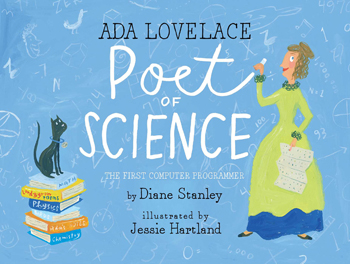
Ada Lovelace, Poet of Science: The First Computer Programmer. Written by Diane Stanley; illustrated by Jessie Hartland. Simon and Schuster, 2016. $17.99. Ages 4–8.
This charmingly illustrated book begins Ada Lovelace’s biography when she was a little girl full of imagination and ideas for inventions. We follow Ada from her early musings, which met with her mother’s disapproval, to her teenage years, attending balls with the likes of inventor Charles Babbage and naturalist Charles Darwin, and then on to her married life, during which she works with Babbage in a friendly collaboration. Along the way, readers learn about the history of women and science in England in the 1800s. —Katie L. Burke
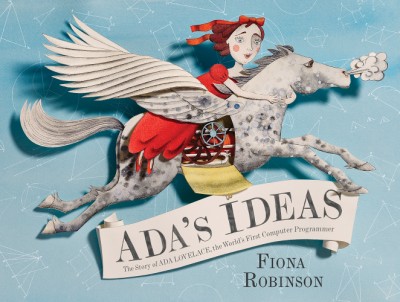
Ada’s Ideas: The Story of Ada Lovelace, the World’s First Computer Programmer. Fiona Robinson. Abrams, 2016. $17.95. Ages 6–9.
Fiona Robinson has created a drop-dead gorgeous world in Ada’s Ideas, with bright colors and crisp-edged, intricate paper cutouts and collages balanced by backgrounds ranging from graph paper to smoky watercolors to serene pastels. This approach works well for telling the story of a girl growing up in a complicated family situation—especially one who has abilities and interests vast enough to thoroughly challenge conventional expectations of women at the time. Robinson’s approach is especially fruitful when she uses a mazelike collection of paper-cutout spirals to illustrate how Lovelace created an algorithm that could instruct a machine to calculate Bernoulli numbers, guiding the machine’s selections sequentially. The mathematical concept is complex but, following the instructions Robinson provides, children can trace a path along the multicolored paper trails to see just how Lovelace put the sequence together. —Dianne Timblin
Torn between Two Lovelaces
As it happens, 2016 brought two terrific new kids’ books about 19th-century mathematical wonder Ada Lovelace: Ada Lovelace, Poet of Science and Ada’s Ideas. To complicate matters for harried holiday shoppers trying to quickly distinguish between the two books, both cover hues happen to be pastel shades of blue, both titles begin with “Ada,” and both books are intended for kids under 10. Truth be told, kids may thoroughly enjoy reading both books, especially if they’re captivated by mathematics or history. As you might expect, though, the titles do cover much of the same territory: Lovelace’s childhood, how her passion for systems and numbers led to intriguing work as an adult, and the influence of her family on her life and work. (Her father, famously, was rakish poet Lord Byron. Her mother, a mathematician, fretted incessantly that her daughter would also lead a dissipated life.) Nonetheless, the books differ significantly in tone and details. Stanley’s Ada Lovelace is more whimsical even as it remains true to the science, and it's also a bit lighter and warmer. Robinson’s Ada’s Ideas does a great job of delving into more of the complexity of Lovelace’s work. These details are interesting in themselves, yet they also help convey the depth of Lovelace’s imagination, not just the height of its flight. If you must choose, the age of the child you have in mind may be key. Ada Lovelace is intended for slightly younger children (ages 4–8), while Ada’s Ideas was written for kids who are a little older (ages 6–9); so for preschoolers and kindergartners, I’d recommend the former, and for second graders and up, the latter. But, hm, what about first graders? Oh heck, just read ‘em both! —Dianne Timblin
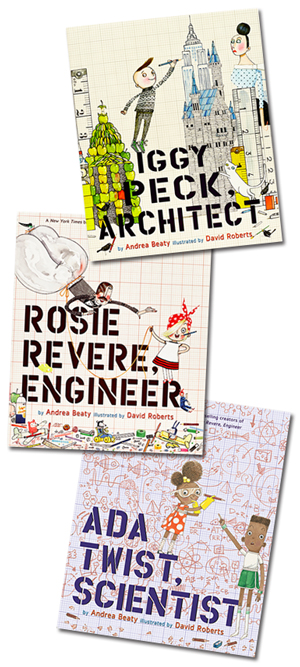
Ada Twist, Scientist. Written by Andrea Beatty; illustrated by David Roberts. Abrams, 2016. $17.95. Ages 5–7.
Rosie Revere, Engineer. Written by Andrea Beatty; illustrated by David Roberts. Abrams, 2013. $17.95. Ages 5–7.
Iggy Peck, Architect. Written by Andrea Beatty; illustrated by David Roberts. Abrams, 2007. $17.95. Ages 5–7.
When my five-year-old daughter first saw these books, she practically pulled them from my hands, saying “Mom, I NEED these, to learn how to be a scientist!” These books may not teach her the scientific method exactly, but what they do emphasize is perseverance. Ada Twist often makes a mess with her experiments, and her family has to come to terms with that. Rosie Revere learns to overcome failure with her inventions before she succeeds. Iggy Peck takes the initiative to rescue himself and his friends with innovative materials use in building. These are great baseline principles to encourage kids to keep trying, even when they don’t get it right the first time. —Fenella Saunders
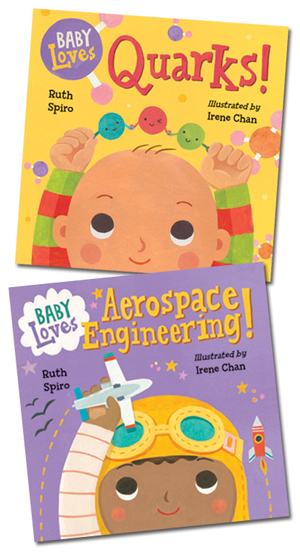
Baby Loves Aerospace Engineering. Written by Ruth Spiro; illustrated by Irene Chan. Charlesbridge, 2016. $8.95. Ages 0–3.
Baby Loves Quarks. Written by Ruth Spiro; illustrated by Irene Chan. Charlesbridge, 2016. $8.95. Ages 0–3.
I applaud this series of board books for attempting to bring some complicated topics down to a very introductory level. Using cute and colorful illustrations, these books rely on the familiar to explain the unfamiliar. Baby Loves Quarks equates a tower built with toy blocks to atoms built with quarks; Baby Loves Aerospace Engineering shows how birds fly, using that as a way to explain what happens in aerodynamics. Obviously, the books have to keep things on a very abstract level, but if you’re looking for baby books that at least bring up the subjects of physics and engineering as normal aspects of everyday life, these are a great place to start. —Fenella Saunders
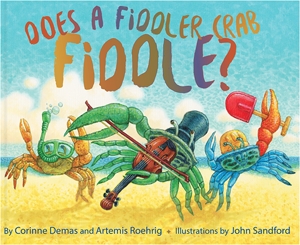
Does a Fiddler Crab Fiddle? Written by Corinne Demas and Artemis Roehrig; illustrated by John Sandford. Persnickety Press, 2016. $15.95. Ages 4–8.
This book is perfect for the toddler who loves to say “No!” (And what toddler doesn’t?) With each absurdist question—such as, “Does a fiddler crab ride a skateboard?”—the authors introduce a new fact about the fiddler crab’s natural history. Even adults will likely learn something new about this quirky crustacean. The illustrations are equally fun, inviting readers to consider fiddler crabs not only fiddling but also wearing sunglasses and doing magic tricks. —Katie L. Burke
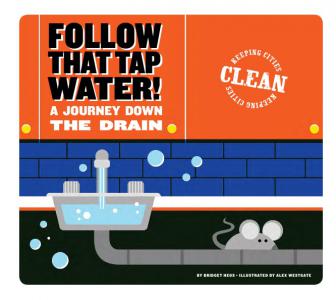
Follow That Tap Water! A Journey Down the Drain. Written by Bridget Heos; illustrated by Alex Westgate. Amicus, 2016. $29.95. Ages 5 and up.
Kids see water come out of the tap, and they generally don’t understand how it connects to rain or rivers. They also don’t understand why they can’t drink water from, say, a pond. This book provides them with an outline of the numerous steps water has to go through in order to be safe, and also what happens to water once it leaves the house again. It’s got enough kid-grabbing grossness to keep them interested—my five-year-old was howling at microbes eating toilet water. My kids also enjoyed the water-drop characters and their funny little catchphrases. (“Now I’m fat free!” exclaims a water drop as it exits a waste water treatment that removes fats and oils.) A suggested experiment at the end of the book gives kids a basic idea of how water filters work. It’s relatively quick and easy to set up, and kids end up feeling a strong sense of connection to the whole water cycle. —Fenella Saunders
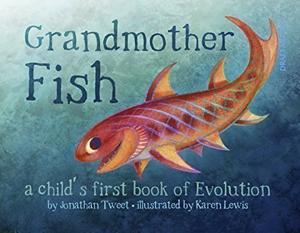
Grandmother Fish: A Child’s First Book of Evolution. Written by Jonathan Tweet, illustrated by Karen Lewis. Feiwel and Friends, 2016. $17.99. Ages 3–6.
The concept of evolution can be difficult for young kids to grasp. You can’t really explain the intricacies of genetics on their level. And they don’t have a real sense of the time scales over which the Earth has existed. But this book provides a great way to start the conversation. It explains evolution by discussing how plants and animals pass along certain capabilities to their descendants (such as breathing air or walking on land), how those abilities connect living beings to their ancestors, and how the capabilities also add up over time. A guide at the end goes into more detail about these abilities and offers simple approaches you can take to explain basic evolutionary concepts to kids, such as descent with modification and natural and artificial selection. It also includes a list of common misconceptions about evolution, presented alongside accurate information that may help kids better understand the process. —Fenella Saunders
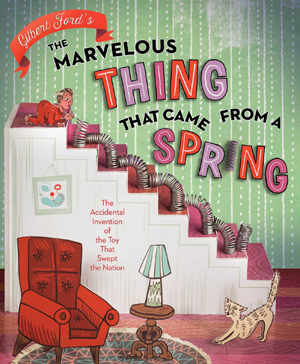
The Marvelous Thing That Came from a Spring: The Accidental Invention of the Toy that Swept the Nation. Gilbert Ford. Atheneum, 2016. $17.99. Ages 4–8.
With writing and artwork by Gilbert Ford, illustrator of the wonderful Mr. Ferris and His Wheel (included in our 2014 gift guide recommendations), this story of the Slinky is full of diorama-style assemblages mixed with illustration and photography. It unfolds the tale of how inventions come about—serendipitous discovery followed by a lot of hard work—and the tension that can result when market forces stand in the way of a good idea. The language is a bit hyperbolic, and although it’s great that the inventor’s wife is given prominent credit for her part in the Slinky’s invention and marketing, traditional gender roles still seem to be reinforced (perhaps unavoidable given the era when the invention took place). Nevertheless, kids will likely enjoy learning the back story of a toy that is still one of their favorites.
—Fenella Saunders
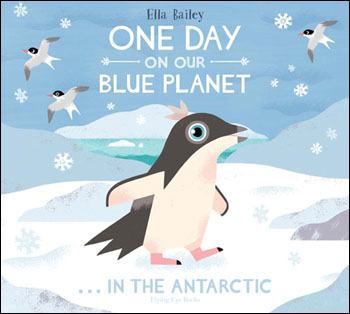
One Day on Our Blue Planet . . . in the Antarctic. by Ella Bailey. Flying Eye, 2016. $16.95. Ages 3–7.
Illustrator Ella Bailey’s sweet and lively introduction to the creatures that inhabit the wild and remote Antarctic is filled with a surprising variety of species. This is the second title in her series of books that depict a day in the life of a baby animal in the wild. Kids will have fun following the Adélie penguin chick’s adventures in the Antarctic Ocean. Bailey’s friendly illustrations—in soft blues, aquas, and purples with complimentary accents of pink and orange—depict the environment the Adélie penguin chick shares with other creatures, big and small, as well as the dangers and wonders she encounters in the sea and under the ice.—Barbara Aulicino
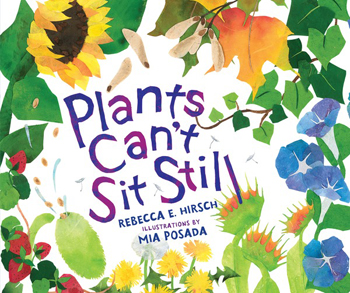
Plants Can’t Sit Still. Written by Rebecca Hirsch, illustrated by Mia Posada. Millbrook, 2016. $14.99. Ages 5–10.
This wonderful book teaches about all the ways that plants move—from various modes of seed dispersal to subtle movements, such as growing taller or closing up flowers at night. It encourages children to look at plants in a new way and pay attention to all the details that tell us about how plants move and transport themselves. Indeed, plants fly, swim, hide, eat bugs, ride inside bears, and more! A section at the end includes detailed descriptions of each plant depicted in the book, explaining more about its natural history and how and why it moves. The watercolor illustrations show plenty of plant action to help readers know what to look for in their parks, backyards, and gardens.
—Katie L. Burke

The Animal Cell. Thomai Dion. Think-a-Lot Tots series. CreateSpace Independent Publishing Platform, 2016. $9.99. Up to age 6.
How Many Microorganisms? Thomai Dion. Think-a-Lot Tots series. CreateSpace Independent Publishing Platform, 2016. $9.99. Up to age 6.
The Neuron. Thomai Dion. Think-a-Lot Tots series. CreateSpace Independent Publishing Platform, 2016. $9.99. Up to age 6.
My Science Lab Notebook. Thomai Dion. Think-a-Lot Tots series. CreateSpace Independent Publishing Platform, 2016. $7.99. Ages 3 and up.
Although these books indicate that they’re intended for toddlers, my five-year-old found them more engaging than my three-year-old. My five-year-old’s favorite in the series was The Neuron, and after reading about the brain’s helper cells (as they are called in the book), she ran around giggling and saying, “My brain is sending messages to my body to walk! My brain is sending messages to my mouth to smile!”
The Animal Cell was a good place to start, as it describes all the pieces inside a cell—handy background information for other topics in the series. How Many Microorganisms? was visually engaging as it described the many different shapes that microorganisms can take. However, some of the language in this book landed a bit above my kids’ heads and required additional explanation. Finally My Science Lab Notebook is aimed at older children who can already read and write, but it includes space that younger children can use to draw pictures of experiments. (If your kids watch TV shows such as Sid the Science Kid, where he has a lab notebook in which to draw experiment results, they will particularly enjoy having a notebook of their own.) For instance, one of my five-year-old’s recent experiments involved rubbing a plastic comb over different surfaces to hear the various sounds produced; then she tried to figure out why those sounds were different from each other. She enjoyed being able to write (or draw) the results for herself. —Fenella Saunders
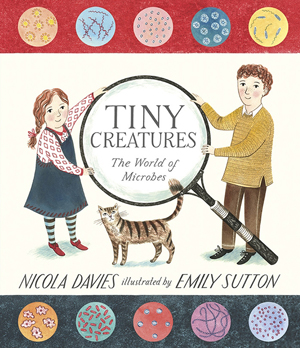
Tiny Creatures: The World of Microbes. Written by Nicola Davies; illustrated by Emily Sutton. Candlewick, 2014. $15.99. Ages 5–8.
Although the images of animals in this book aren’t drawn entirely to scale, Tiny Creatures does a great job of getting across just how small microbes are—pointing out, for example, that an ant antenna would have to be as big as a blue whale for the millions of bacteria on it to be visible to humans. The numbers of microbes in a drop of water or a spoon of soil are equated with the human populations of New York state or India, respectively. Also, a series of illustrations demonstrates the speed at which microbes can replicate, much to the amazement of my five-year-old. —Fenella Saunders
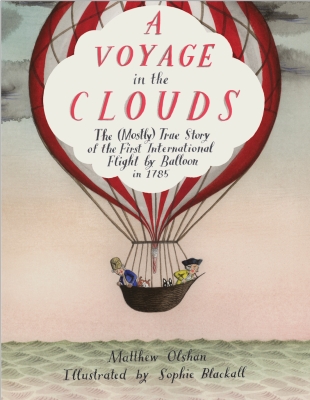
A Voyage in the Clouds: The (Mostly) True Story of the First International Flight by Balloon in 1785. Written by Matthew Olshan; illustrated by Sophie Blackall. Farrar, Straus, and Giroux, 2016. $17.99. Ages 4–8.
I’d like to play coy about this book, really I would. But I’ll give it to you straight: This is one of the most delightful books I’ve read all year. Olshan spins the tale (mostly true, as the title frames it) of the first balloon flight to successfully ferry people across the English Channel. The two adventurers so ferried were Jean-Pierre Blanchard, the pilot, and John Jeffries, a doctor and the venture’s financier. The year is 1782, and the men are at odds from the beginning. Their hilariously awkward conflicts leaven the story, which pits Englishman versus Frenchman, speechifier versus doer, type A personality versus type B. The characters and their conflicts are mirrored by each man’s canine mini-me: Jeffries brings along an English bulldog; Blanchard’s bulldog is, of course, French. Eventually, a crisis reshapes the relationship as the men put their heads together to get past a very sticky aeronautic wicket. Olshan’s lively narration illuminates a milestone in the history of flight while also conveying a bit of the physics involved in ballooning. Sophie Blackall’s clever illustrations, presented as stylized riffs on 18th-century illustrations, heighten the pleasure of the book and etch its scenes all the more deeply into memory. —Dianne Timblin
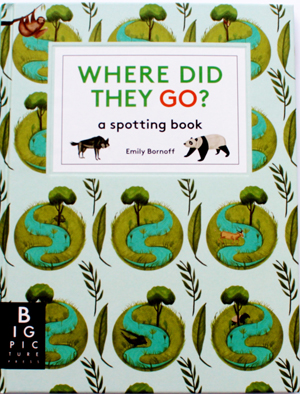
Where Did They Go? Emily Bornoff. Big Picture Press, 2016. $14.99. Ages 2–5.
Do you feel there are too many brown bears and very hungry caterpillars in children’s books, and not enough addaxes, gharials, and bilbies? If so, this interactive book will make a fine addition to the book collection of a child close to your heart. Each spread depicts a new landscape on which the reader must find a hidden animal. The 13 animals introduced are some of the most elusive in the world—they are difficult to find even for a biologist—and each comes from a different part of the globe. —Katie L. Burke
American Scientist Comments and Discussion
To discuss our articles or comment on them, please share them and tag American Scientist on social media platforms. Here are links to our profiles on Twitter, Facebook, and LinkedIn.
If we re-share your post, we will moderate comments/discussion following our comments policy.